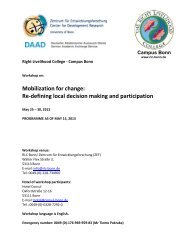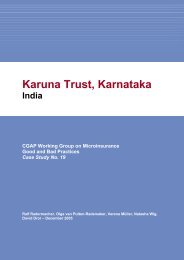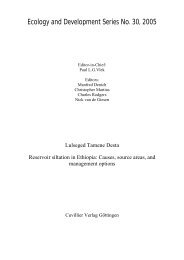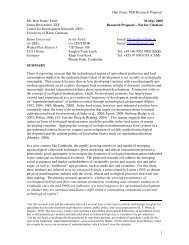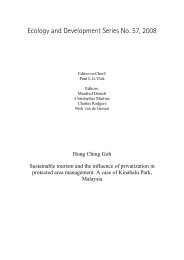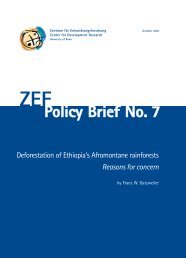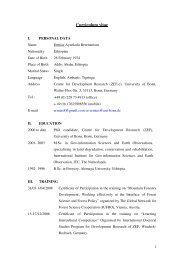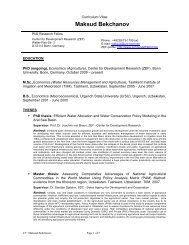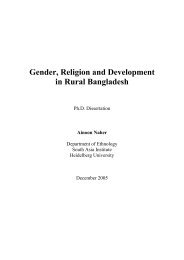ZEF Bonn
ZEF Bonn
ZEF Bonn
You also want an ePaper? Increase the reach of your titles
YUMPU automatically turns print PDFs into web optimized ePapers that Google loves.
Essay<br />
“Disasters, Conflicts and Natural Resource<br />
Degradation: Multidisciplinary Perspectives on<br />
Complex Emergencies”<br />
Joachim von Braun, Paul L.G. Vlek, Andreas Wimmer<br />
The purpose of this essay is to highlight disasters in a broader sense as an important<br />
area of development research and policy. The disaster-related information base is<br />
weak, research is still in its early stages and current political responses are piecemeal.<br />
Our suggestion is to take a closer look at natural, economic and political factors<br />
responsible for major disasters to develop a basis for an integrated policy approach.<br />
Some of the world's major disaster areas, such as in Afghanistan, Somalia or<br />
Ethiopia, are simultaneously the locus of protracted conflict and war, natural disasters<br />
and a long-term degradation of natural resources. War, famines, epidemic<br />
diseases and resource depletion seem to occur in the same locations, just like with<br />
the series of plagues in the scriptures.<br />
Despite this apparent concurrence, the relation between political conflict, poverty<br />
and natural resource degradation in the causation of such complex emergencies is<br />
still hazy. While there are obvious feedback mechanisms, for example, between conflict,<br />
institutional breakdown, poverty, and vulnerability to hazards, the precise<br />
nature of these linkages remains to be determined. Interdisciplinary research is especially<br />
needed<br />
● on the linkages between man-made and naturally caused complex disasters,<br />
● on each of their causes and<br />
● on effective ways of their mitigation and prevention.<br />
On the policy-making side, too little attention is paid to improving the situation of<br />
the poor in conflicts and disasters: disaster prevention resources flow largely to<br />
where capital damage can be reduced, not to where poor peoples' livelihood can be<br />
sustained. While the politics of prevention, both of vulnerability to hazards and of<br />
violent conflict, are by now well established, we lack a solid comparative evaluation<br />
of the various approaches and their context-dependent efficiency. An integrated<br />
approach that addresses both short-term vulnerability to disasters and violent conflict<br />
and long-term policies for natural resource utilisation, poverty reduction and<br />
democratisation that prevent hazards has yet to be developed.<br />
In the following, we first describe and discuss definitions, trends and changing patterns<br />
of man-made as well as natural disasters. Second, we highlight the interlinkages<br />
between long-term and creeping degradation of natural resources, especially<br />
soil, and natural disasters. Third, we discuss the relation between political conflicts<br />
and man-made disasters such as wars and famines. We are thus only addressing<br />
some of the linkages in an obviously far more complex causal pattern. Much needs<br />
Essay<br />
Interdisciplinary research is<br />
needed on the linkages between<br />
issues such as conflict,<br />
poverty and vulnerability to<br />
hazards.<br />
5



